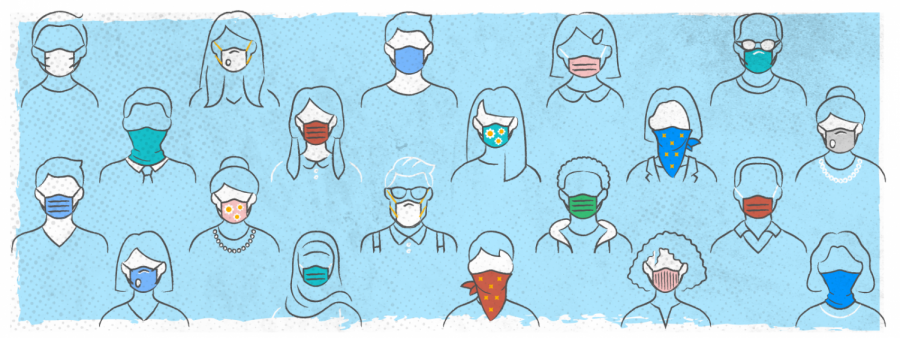Not All Facemasks Are Created Equal
January 28, 2021
Mask mandates across the country have caused the public to begin wearing facemasks; however, the material and type of masks make some more effective than others.
The Center for Disease Control states that COVID-19 “is transmitted predominately by respiratory droplets generated when people cough, sneeze, sing, talk, or breath.” The spread of the virus can be prevented by the use of face masks. AP News acknowledges that infected people can be contagious even if they haven’t shown any symptoms. The news source also recognizes that masks help protect both the wearer and those around them.
Here are a few of the most popular types of face-masks; ranked from most effective to least effective.
N95 masks are designed for health care workers who could be directly exposed to COVID-19. They are not recommended for the general public because of their limited availability. According to The Mayo Clinic, N95 masks provide “more protection than a surgical mask does because it can filter out both large and small particles when the wearer inhales.” The mask blocks 95% of small particles and droplets.
Then, there are surgical masks. These three-layered masks are loose-fitting and disposable. They protect the wearer’s mouth and nose from germs and also filter air. These masks sometimes include a face shield. They are usually available at drugstores, pharmacies, and grocery stores.
Polypropylene apron masks are a reusable option. According to USA Today, polypropylene may be one of the best materials for homemade masks. The fabric easily traps particles. As a bonus, it is soft and easy to clean.
Cotton masks need to be at least two layers in order to be effective. A benefit of cotton masks is that they are reusable as long as they are washed after use. They can be made at home with a sewing machine.
Bandanas and neck gaiters proved to be some of the least effective masks. According to USA Today, a neck gaiter actually ranked worse in safety than not wearing a mask at all because their “porous fabric may break the larger particles into smaller ones. Smaller particles remain in the air longer than large droplets.”
Regardless of the type of mask used, it is essential to make sure that the mask securely covers the nose and mouth. A facemask should not move or fall while the wearer is speaking. Furthermore, even with masks, there still is some risk of getting COVID-19, so social distancing and washing hands is still a good rule of thumb.
